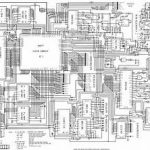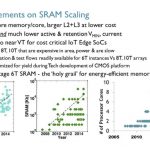In this tutorial we will see how to design a VHDL block. We will start with a very simple block and we will gradually add features to it. We will also simulate it and test its output with Matlab. Over the process we will see:
… Read More
Electronic Design Automation
Five Things To See at DVCon India 2016
DVCon is an annual Design and Verification Conference that started out in Silicon Valley, then expanded by adding India as a new location. Our semiconductor design and verification world is global in stature, so if you’re living in the region then consider registering for this event held Thursday and Friday, September … Read More
Is Your Next Reality Going to be Augmented?
John Lennon reportedly once said “Reality leaves a lot to the imagination…” and now we have the technology to do something about making our reality a lot more imaginative. Unless you have been living under a rock (and there is nothing wrong with that – I just haven’t found the right rock myself) there is a LOT going on these days in the… Read More
Three Steps for Custom IC Design Migration and Optimization
Popular companies designing smart phones, CPUs, GPUs and Memory components all employ teams of custom IC designers to create the highest performance chips that are as small as possible, and at the lowest costs. How do they go about doing custom IC design migration and optimization when moving from one process node to another one?… Read More
A new world of 10nm design constraints
Every time the industry transitions to a smaller process node IC design software undergoes extensive updates.
I talked to a couple of experts in physical design at Mentor Graphics about what is involved in making place-and-route software ready for a new node. This is what I learned from Sudhakar Jilla, the IC design marketing director… Read More
Embedded Product Development – Make vs Buy
Original Equipment Manufacturers (OEMs) face many questions before building any product. After they are convinced that there is a business potential in their new product, next comes the crucial stage of project execution. They aspire to build the product in-time, maybe before the competitors or better than the competing products,… Read More
We Don’t Need Graphic Design. We Do Need Graphic Views
Many years ago, there were attempts to (re-) introduce a graphical entry approach to building RTL design. The Renoir product was one example. The idea has some initial appeal. You describe the behavior in a small block using (textual) RTL but the larger structure of instances and higher-level connectivity can be described as a … Read More
Low Frequency Noise Challenges IC Designs
AMS and RF IC designers have known for years that their circuits are sensitive to noise, because if you amplify noise on an input source to an amplifier circuit then your chip can start to produce wrong answers. Even digital SoC designers need to start taking notice because every SoC is filled with SRAM IP blocks, and at each shrinking… Read More
Striving for one code base in accelerated testbenches
Teams buy HDL simulation for best bang for the buck. Teams buy hardware emulation for the speed. We’ve talked previously about SCE-MI transactors as a standardized vehicle to connect the two approaches to get the benefits of both in an accelerated testbench – what else should be accounted for?… Read More
Statistical Simulation Provides Insight into 6T SRAM Optimization
ARM’s Azeez Bhavnagarwala recently gave a talk hosted by Solido on the benefits of variation aware design in optimizing 6T bit cells. Azeez sees higher clock rates, increasing usage of SRAM per processor and the escalating number of processors, shown in the diagram below, as trends that push designers toward 6T. Six Transistor… Read More









AI RTL Generation versus AI RTL Verification